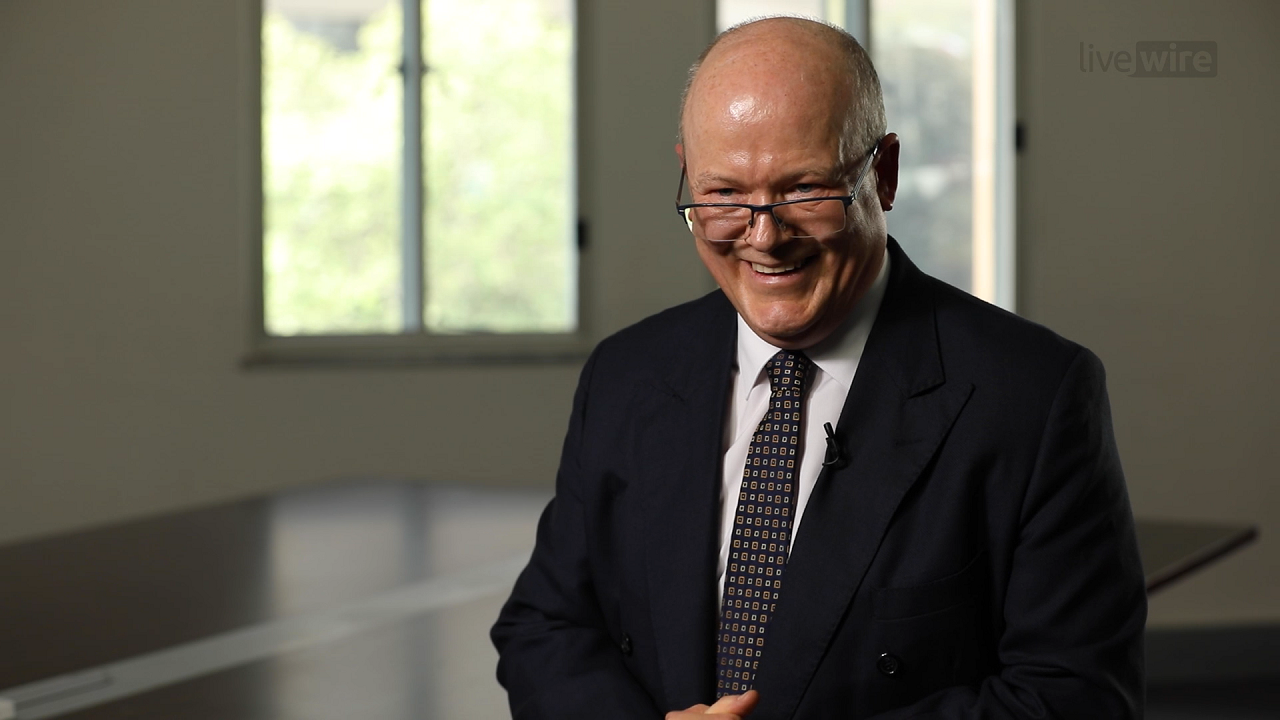Hofflin: An update on the thesis for ASX energy stocks
Back in October 2020, Dr Philipp Hofflin of Lazard Asset Management did what every great Value investor does - He went against the grain of markets. Oil and gas producers have been out of favour for years, yet they still make up 80% of the global energy supply.
At that point, oil prices were at their lowest level in over 20 years, and this had bruised Value managers licking their lips. Since Dr. Hofflin first shared his thesis oil prices have nearly doubled and remain stubbornly high. The ASX200 Energy Sector (XEY) is up 30% over the past 12 months, providing a healthy boost for those managers, like Lazard, with a decent exposure to energy stocks.

The initial drivers of interest in this unloved sector were persistent low prices and the emerging energy gap that renewables are not yet ready to fill.
"What attracted us to the sector 18 months ago (October 2020) was a combination of the very low prices and the fact that there was just no CAPEX around the world in energy...(Modern renewables) are only at 6% of global supply, and they aren't able to fill the hole that is left by the much larger declines on the fossil fuel side at the moment."
Two of Lazards big winners from this thematic have been Woodside Petroleum and Whitehaven Coal. Since October last year, Woodside has returned over 60%, whilst Whitehaven has quintupled - and is on track to "pay a (fully-franked) dividend that's larger than the share price when we spoke about it 18 months ago"
In this episode of Expert Insights, Dr. Hofflin revisits his original thesis on the sector and shares an updated view on energy markets. He also refreshes his view on these 'special' energy names
Main topics discussed:
- What initially attracted him to the energy sector and his renewed thesis
- How the fund has managed its positions in Woodside and Whitehaven
- The outlook for these high performing stocks
Edited transcript
What is your current thesis on the outlook for energy prices, and have the drivers changed compared to when you first shared your thesis in October 2020?
The basic thesis hasn't really changed. It's all driven by this very important project that humanity has: the energy transition. And the opportunity that this throws up in all directions; on the fossil fuel and renewable sides, as well as on the CAPEX side.
So what attracted us to the sector 18 months ago (October 2020) was really a combination of, firstly, the very low prices - some of these were astonishingly low - and secondly, the fact that there was just no CAPEX around the world in energy.
At the risk of really simplifying what is a very complex topic, 80% of the world's primary energy supply comes from fossil fuels. They have a natural depletion rate, for oil and gas, for example, of 5% to 7%. So, if you don't invest, then you don't have replacement projects for the ones that run off and your supply actually starts to fall.
On the other side, we have modern renewables, solar and wind. CAPEX there is very high, but they're only at 6% of global supply, and they aren't able to fill the hole that is left by the much larger declines on the fossil fuel side at the moment.
In the last 12 months, we've had energy shortages in Europe, India, China and in Japan. This has given us very high fossil fuel prices. There are some positive consequences and some negative ones. Positive is the fact that it does encourage the transition, because it makes investment in renewables much more attractive. That's a big positive.
But there are also negatives, in the sense that it is clearly highly inflationary for the world economy.
There are indications already that amongst very poor nations, people are burning more wood. That's bad for deforestation. And also, as you'd be aware, gas prices very much drive fertiliser costs because a lot of the nitrogen fertilisers are produced from gas through the Haber-Bosch process. Fertiliser costs have risen enormously, and in various parts of the world, there's a lot of concern about crop yields, and therefore food prices.
Returns in Woodside have been strong and spectacular in Whitehaven. How have you managed these positions?
Look, it's a good question. 18 months ago we thumped the table on energy here on Livewire. I referred to Whitehaven as a special, and we gave it a bit of a special weight in our portfolio.
It's up fivefold since, and amazingly enough, it may well pay you a dividend that's larger than the share price when we spoke about that 18 months ago, and it'll be fully franked.
In terms of how you value these, there are two very strong competing forces. Let me stay with the most extreme case, which is Whitehaven. To a lesser extent, this applies to all energy stocks.
But in the case of Whitehaven, the current ex-Newcastle high CV thermal coal price is over $400 US. At those sorts of prices, Whitehaven has a free cash flow that is about equivalent to its market cap, over 12 months. So, free cash flow is at a level of 100%.
At the same time, we know that these extraordinary prices are not going to last. It's overwhelmingly the case that these prices will be lower. In fact, our long-run prices are less than 20% of the current price. So you have, on one side, the fact that prices will fall. The second factor though is that if these prices remain high for even a couple of months or quarters - and remember, there is no supply response - the company will earn its entire market cap by early next year. So, these are the competing forces that you're dealing with.
Clearly, the risk-return profile for something like Whitehaven isn't as good as it was, and we've lowered our weight. I think we've now sold 85%-90% of our shares because the prices have risen so much.
On one hand, we have the fact that commodity prices will fall, and on the other hand, there will be enormous cash flows. The way we assess this contrast is a very rigorous DCF methodology. We never change it. We haven't changed it. We haven't really increased our long-run prices. That is where I think the market sometimes gets these things wrong - when they become very enthusiastic.
Do you see upside/value in these stocks today and can you share your current views on each of them?
The way we do this is we take today's price and we mean revert that to our long-run value. If prices are particularly out of equilibrium, we do it much, much faster. So we have that bonanza shutting off fairly quickly. And we do a DCF. In the case of a company like Whitehaven, we use a higher discount rate to reflect the risk that is clearly there. We leave 80% of the resource in the ground in our models and really attribute pretty much nothing to any expansions that they could do.
In the case of Woodside, we use the exact same methodology. The numbers aren't perhaps quite as dramatic, but Woodside too is on a 33% spot free cash flow yield today.
The astonishing thing about Woodside is that you can buy it today at 20% less than it was pre-COVID. Yet has is done a deal with BHP Petroleum, that is currently delivering phenomenal earnings. The Asian gas price is off at $30 for a million British thermal units - it's an extraordinary price. The cash flow is enormous. They have a fortress balance sheet because they did this deal entirely with equity.
And as I say, you're here with this enormous cash flow yield.
Whitehaven is a risky stock. I think that's how I described it at the time. On the other hand, Woodside, which has a sort of breakeven cost of production of just a bit over $10 a barrel, in a world where the old price is $110, it's a pretty safe value opportunity.
You can learn more about the Lazard Select Australian Equity Fund by clicking on the Livewire fund profile below.

3 topics
2 stocks mentioned
1 fund mentioned
1 contributor mentioned

